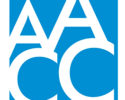Report roundup
By AACC 21st Century Center Staff
March 21, 2019
A monthly roundup of reports of interest to the community college sector.
Here are three reports you should know about this month.
- The American Academy of Arts and Sciences’ Humanities Indicators has reported that the humanities are a large and growing presence in community colleges, and now data can back that up. Humanities Indicators, working with the American Association of Community Colleges, college leaders and others, designed a survey to provide a comprehensive picture of the state of humanities education. The survey found that 2.8 million community college students took a humanities course in fall 2015. Of those, more than 1.7 million took at least one course in English and approximately 700,000 students took a history course. About 300,000 students took courses in a language other than English. Between 255,000 and 275,000 students took a philosophy course. During fall 2015, about 95 percent of community colleges offered one or more courses in English, about 90 percent offered a philosophy course and 75 percent offered a history course. The study also includes information about humanities faculty.
- Nearly 40 percent of students who started at a public two-year college completed their credential over a six-year period, according to a new National Student Clearinghouse Research Center report. The 39.2 percent completion rate calculated by the followed a fall 2012 cohort of students over six years and includes full-time, part-time and mixed-time students. When looking at transfer students, nationally, 16 percent of students who started at public two-year colleges transferred and completed a degree at a four-year institution, including those who did so with and without first earning a two-year credential.
- The writers of a new report from Education Design Lab declare that higher education is in the midst of a “Learner Revolution” where learners “will not be tethered to one institution for their degree.” How can colleges adapt? The report reveals five models that traditional institutions can use to meet the demands for lower tuition and new ways of teaching and of capturing and certifying learning. Read about them here.



